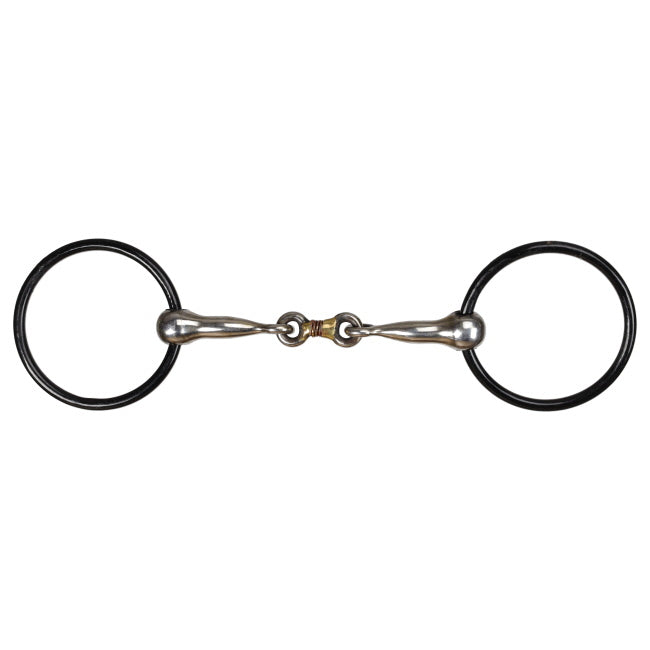A shank bit is a type of leverage bit. The reins do not attach to the mouthpiece but attach below the mouth. Altogether, this rein attachment increases the pressure on the horse’s mouth.
The shape and length of the shank dictate the amount of added pressure. With five pounds of pressure from the rider, a shank can easily add ten to twenty pounds of pressure to your horse’s bit.
Moreover, the shank bit applies pressure in more areas of the horse’s head. Your horse will feel pressure at the corner of his mouth, tongue, roof of the mouth, jaw, chin groove, and poll.
What are the Different Types of Shank Bits?
Shank bits come in a variety of lengths and styles. The shank length will vary with the amount of added pressure applied. Otherwise, the length has no further impact. There are four types of shank bits. The three types of shank bits are:
- Fixed
- Swivel/Loose
- S Shank
When do Riders Use a Shank Bit?
Shanks bits are not a necessary tool for a rider. You should only use a shank bit with an advanced horse with an advanced rider.
Your horse should perform all trained commands with a snaffle bit before transferring to a shank bit. You will need to re-train your horse to respond to the pressure of the new shank bit. Without a slow transition, your horse may overreact to the added pressure or get hurt.
Do not use the shank bit to calm a spooky horse. It will not train him properly but will add stress to the process of riding.
If you want to show your horse, a shank bit will help train your horse to hold his head straight and level. It will also push your horse back onto his haunches. You will lose the ability to correct your horse from side to side and must instead control your horse’s movement from your seat.
Introduce the bit slowly to your horse. Short training sessions that adapt your horse to the pressure will ease them into it. Some horses may overreact to the pressure during the first few training sessions.
Why do Riders Choose a Shank Bit?
Shank bits allow riders to communicate subtly with their horse through small hand movements and seat and leg pressure. As a horse advances in training, a shank bit can help make the rider’s movements more subtle, especially in the show ring. You will often see western show horses being ridden in a shank bit.
What are the Drawbacks of a Shank Bit?
A shank bit does have some drawbacks for the rider and the horse. Overall, a shank bit gives more subtle to the rider. With so much leverage, your horse will respond to the slightest touch.
Additionally, the shank can cause excessive pressure and pain for your horse if used inaccurately.
For a rider who does not intend to show their horses in western competition, there is no need to use a shank bit. Altogether, your horse should have full training in his commands, whether there is a shank bit or not.







